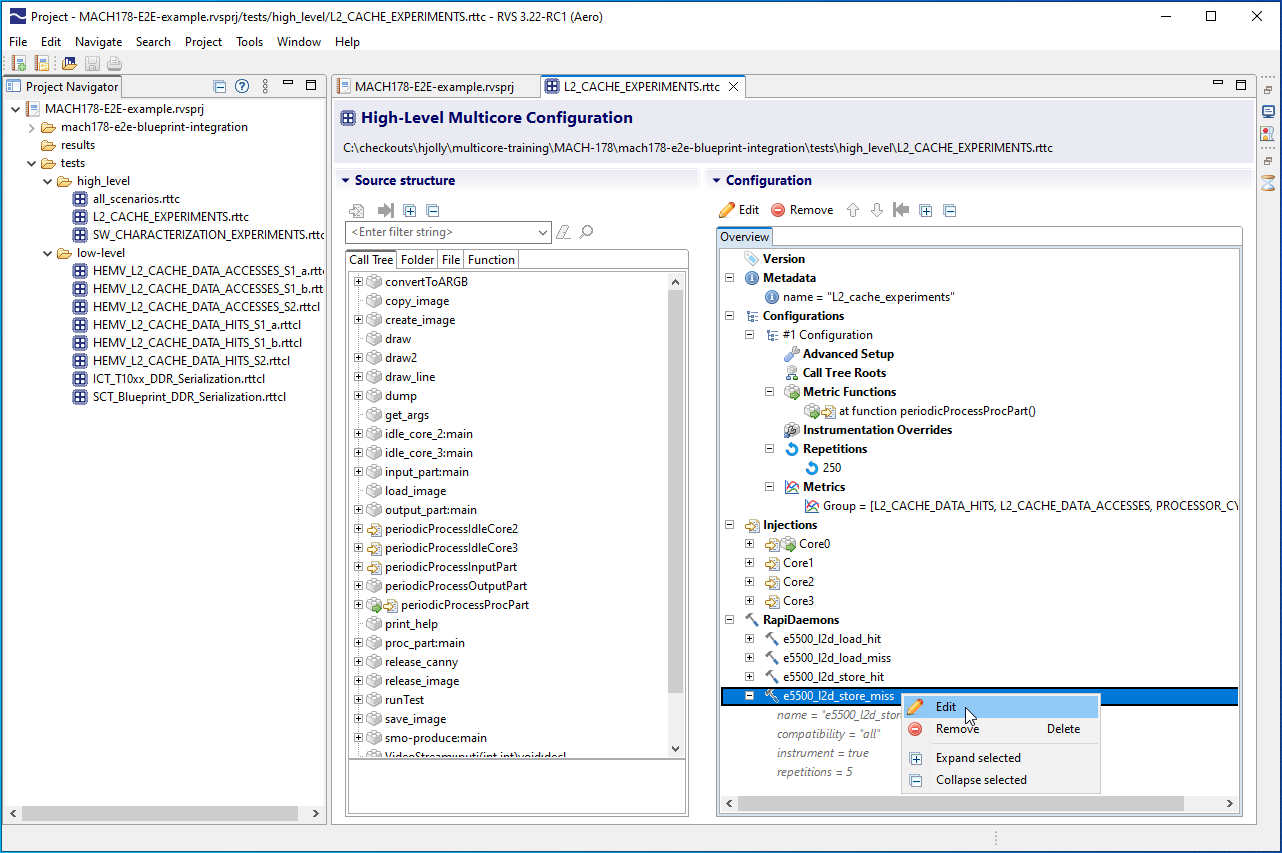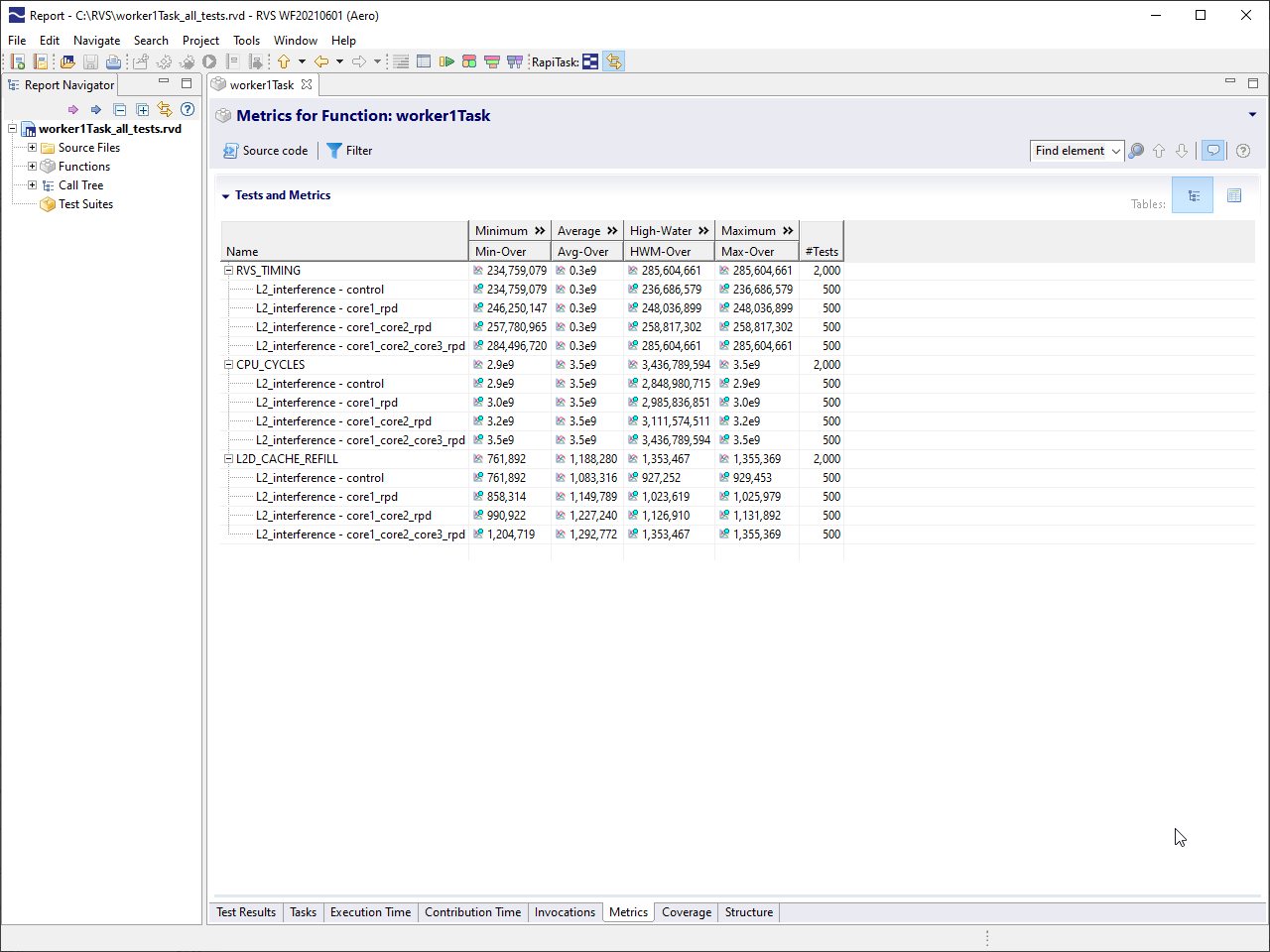
Multicore software verification with RVS 3.22
Multicore Test Formats
RapiTest's multicore test formats let you write tests to support multicore software verification. Multicore tests let you generate interference using RapiDaemons and configure additional metrics to be collected from hardware event monitors (HEMs, below) to validate results.
RapiTest's multicore test formats support activities across the project life cycle. High-level tests let you automatically generate combinations of tests using specific RapiDaemons and HEMs, while low-level tests give you complete control of injection and collection settings on a per-test basis.
Capture Values from HEMs
Values captured from Hardware Event Monitors (HEMs) support multicore verification. HEMs collect data on a platform such as resource access, cache misses, and number of instructions executed, and this data is used to validate results from multicore verification in the MACH178 workflow.
RVS lets you capture values from HEMs to support multicore verification in two ways. By using RapiTest's multicore test format, you can configure the collection of HEMs on a per-test basis. You can also configure the collection of HEM values manually using RapiTime.
Multicore Results Visualization and Analysis
When your results are ready, RVS helps you analyze them. Timing and HEM results are reported against each test case.
You can set baselines against which to compare your results, and display results through a range of charts and tables to understand them in more detail.
Custom Multicore Exports
You can create custom multicore exports to generate detailed reports from multicore verification. These let you automatically populate exports with results from your multicore RVS test runs, and automatically report pass/fail status based on your success criteria.

 Rapita System Announces New Distribution Partnership with COONTEC
Rapita System Announces New Distribution Partnership with COONTEC
 Rapita partners with Asterios Technologies to deliver solutions in multicore certification
Rapita partners with Asterios Technologies to deliver solutions in multicore certification
 SAIF Autonomy to use RVS to verify their groundbreaking AI platform
SAIF Autonomy to use RVS to verify their groundbreaking AI platform
 RVS gets a new timing analysis engine
RVS gets a new timing analysis engine
 How to measure stack usage through stack painting with RapiTest
How to measure stack usage through stack painting with RapiTest
 What does AMACC Rev B mean for multicore certification?
What does AMACC Rev B mean for multicore certification?
 How emulation can reduce avionics verification costs: Sim68020
How emulation can reduce avionics verification costs: Sim68020
 How to achieve multicore DO-178C certification with Rapita Systems
How to achieve multicore DO-178C certification with Rapita Systems
 How to achieve DO-178C certification with Rapita Systems
How to achieve DO-178C certification with Rapita Systems
 Certifying Unmanned Aircraft Systems
Certifying Unmanned Aircraft Systems
 DO-278A Guidance: Introduction to RTCA DO-278 approval
DO-278A Guidance: Introduction to RTCA DO-278 approval
 Avionics Certification Q&A: CERT TALK (with Consunova and Visure)
Avionics Certification Q&A: CERT TALK (with Consunova and Visure)
















